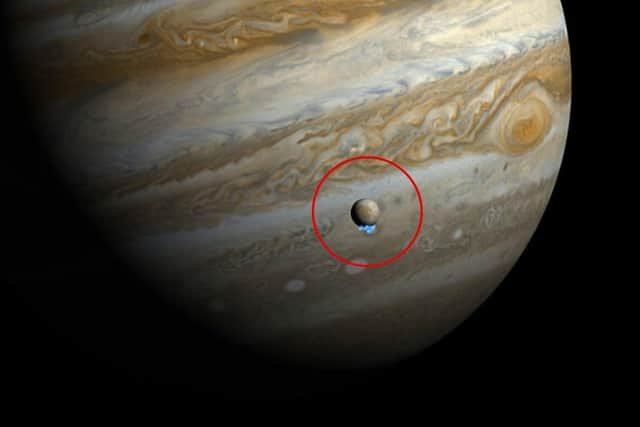Europa: James Webb Space Telescope finds carbon source on Jupiter's moon
and live on Freeview channel 276
Observations from the James Webb Space Telescope have shown that carbon dioxide on one of Jupiter's moons, Europa, comes from within its subsurface ocean.
Europa is a prime target in the search for extraterrestrial life due to its subsurface ocean of salty liquid water.
Advertisement
Hide AdAdvertisement
Hide AdWith the new findings, that come from a pair of independent studies in the journal Science, future missions would assess its potential habitability, depending on its chemistry, including the abundance of biologically essential elements like carbon.


It was previously unclear how the presence of solid carbon dioxide ice on Europa’s surface had originated but researchers, including those from Cornell University in the US, sought to see whether the CO2 was delivered to the moon’s surface by meteorite impacts or through interactions with Jupiter’s sphere of magnetic field around it.
In the new study, scientists analysed data on infrared radiation of CO2 from Europa’s surface obtained using JWST.
One study mapped the CO2 distribution and found its highest amount is in a nearly 1,800-square-kilometre region called Tara Regio. The region is dominated by “chaos terrain” or geologically disrupted resurfaced materials.
Advertisement
Hide AdAdvertisement
